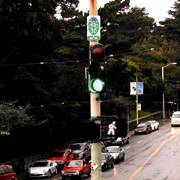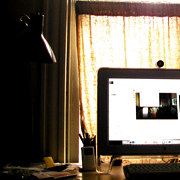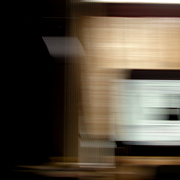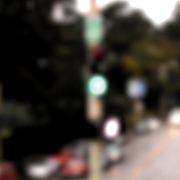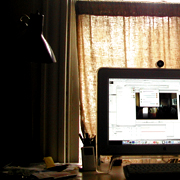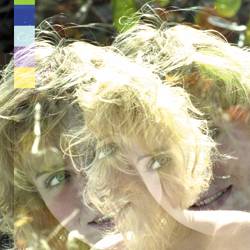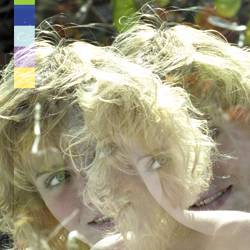Battle of the Color Spaces
| Right about now, many of you are looking around to see which window to throw this book out of. You have been working with digital images since before I could spell RGB and have done perfectly fine working with unconverted video, thank you very much. Truly, much great work has already been created by artists working in nonlinear color spaces, some even in log space. But the color space you work in is going to affect the final image, so you must pick the one that helps you accomplish what you've set out to do, which is to simulate how the world is photographed by a camera. When you brighten a scene, you want to mimic the addition of another on-set floodlight or an expanding camera aperture. An image is blurred to imitate light from out-of-focus objects spreading out across the film gate. To do this properly, you need the compositing math to mimic light in the real world. In the real world, light behaves linearly. The nonlinear encoding in video and film is introduced after all the light has been added linearly. Turn on two lightbulbs of equivalent wattage where you previously had one and your entire scene will become exactly twice as bright. By working in a linear color space, you can perfectly simulate this effect simply by doubling your pixel values. You are getting back to the color space of the original scene. For this reason, linear pixels are often referred to as scene-referred values. The examples in Table 11.1 show the difference between making adjustments to digital camera photos in their native video space and performing those same operations in linear space. In all cases, an unaltered photograph featuring the real in-camera effect is shown for comparison.
The table's first example brightens the image by one stop. A stop refers to clicks on a camera's aperturethe iris that controls how much light coming through the lens will expose the film within. Widening the aperture by one stop allows twice as much light to enter, and each additional stop redoubles the exposure again. An increase of three stops brightens the image by a factor of eight (2*2*2, or 23). Doubling the pixels in video space causes bright areas in the image to blow out very quickly. Video pixels are already encoded with extra brightness and can't take much more. Notice how the curtain and computer screen have lost detail in video space, while the same operation performed in linear space has retained detail. Also notice how the linear image is nearly indistinguishable from the actual photo for which camera exposure time was doubled (another practical way to brighten by one stop). The second example simulates an out-of-focus scene using Fast Blur, one of the most common operations performed in After Effects. You may be surprised to see that it actually causes an overall darkening with bright highlights fading into the backgroundat least when applied in video space. In linear, the highlights pop much better. See how the little man in the Walk sign stays bright in linear but almost fades away in video because of the extra emphasis given to dark pixels in video space. Try squinting your eyes as you look at these images to see how only the video image has darkened overall. Because a defocused lens doesn't cause any less light to enter it, the video blur is not behaving like a true defocus. Comparison with the real-world defocus drives the point home even more, although this simple linear example doesn't mimic the camera's aperture shape or the scene's overbright information, so it isn't completely identical to the real photograph either, but it's close. The table's third example uses After Effect's built-in motion blur to simulate the streaking caused by my quickly panning as I take a photo. Pay particular attention to the highlight on the lamp; notice how it leaves a long, bright streak in the linear and in-camera examples. Artificial dulling of highlights is the most obvious giveaway of nonlinear image processing. Artists have dealt with the problems of working directly in video space for years without even knowing. A perfect example is the Screen transfer mode, which is additive in nature but actually much more convoluted than the pure Add transfer mode. Screen uses a multiply-toward-white function with the advantage of avoiding the clipping associated with Add. But Add's reputation comes from it being applied to bright video-space images. Screen was invented only to help people be productive when working in video space and without overbrights; Screen darkens overbrights (Figures 11.11a, b, and c). Real light doesn't Screen, it Adds. As Stu Maschwitz says, "Add is the new Screen." Figure 11.11a, b, and c. Adding in video space blows out (11.11a), but Screen in video looks better (11.11b). Adding in linear is best (11.11c).
|
EAN: 2147483647
Pages: 156

